HaitiMapDecember 12, 2012 Haiti’s postal service is the most expensive in the world. It costs 15 dollars to mail one postcard to Europe. The post office doesn’t sell postcards. And because the required number of stamps can’t actually fit on a postcard, you also need a large envelope—which, naturally, the post office doesn’t sell either. 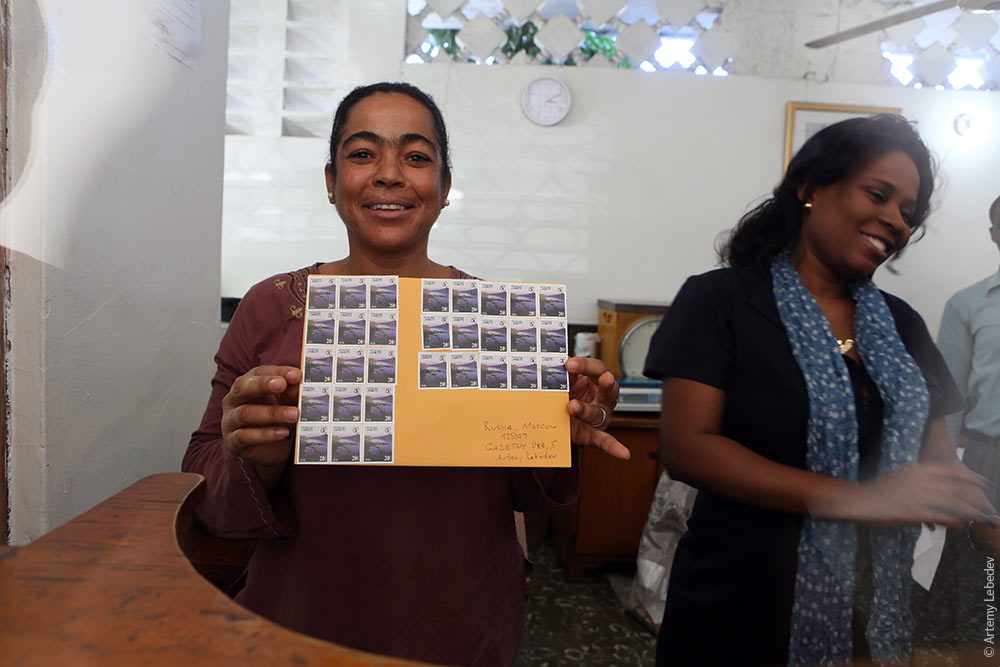 * * *
It’s safe to say that all the former black French colonies now constitute the most violent countries in the world. Former British or Spanish colonies are notably Saint-Domingue was the most profitable of the French colonies, accounting for half of Europe’s imports of coffee and sugar. The French established plantations here, built irrigation systems, and continuously imported huge numbers of slaves from Africa. The colony was inhabited by forty thousand whites (the French), fifty thousand mulattos (“free people of color”), and almost half a million blacks. The whites owned everything and occupied all the administrative positions. Mulattos weren’t full-fledged members of society, but they were able to receive an education, serve in the army, and possess plantations and slaves of their own. As for blacks, the only option they had was to work 14 hours a day. It’s important to understand that back then, the color of one’s skin was a kind of equivalent to military rank or grade. In 1789 the French Revolution broke out. The plantation owners in Saint-Domingue saw this as a convenient opportunity to secede from France and gain independent ownership of the highly profitable island instead of taking orders from overseas. Talk of independence began. The initial conflict that arose was between the whites and free people of color: the French Revolution promised equal rights to all, so those of mixed race decided that this applied to them as well (no one cared about the blacks). In May 1791 the revolutionary government finally accorded people of color the same rights as whites, promising them citizenship. Plantation owners refused to recognize this decree. Free people of color began protesting. In August of the same year, the first black uprisings broke out as well. A hundred thousand blacks began destroying plantations, burning down houses, and killing whites. Jumping ahead, it can be noted that the country’s production capabilities have recovered only marginally since then. Complete chaos followed. France declared war on Britain. The Saint-Domingue plantation owners negotiated for British sovereignty over their territory. Spain, which owned the eastern two thirds of the island (now the Dominican Republic), joined the war against France, supplying black troops with provisions and ammunition. In 1794 the French revolutionary government finally abolished slavery. The 19th century arrived. France managed to somewhat re-establish its rule over Saint-Domingue, in part thanks to a black general named Toussaint L’Ouverture, who fought off the British and appointed himself governor for life. This last move proved to be too insolent for Napoleon, however, and he sent in troops to restore order. Toussaint was promised freedom, but instead was seized and deported to Paris, where he soon died in prison. When it became clear that the French intended to re-establish slavery, the blacks ended their friendship with them once and for all. Napoleon needed troops for his military campaigns in Europe, so the number of soldiers that had remained in Saint-Domingue was insufficient to fight for the colony. The last battle was fought in 1803, with the rebels emerging victorious under the leadership of Jean-Jacques Dessalines. After a decade of uprisings and battles, the revolution had succeeded. Saint-Domingue was renamed to Haiti. On January 1, 1804, Dessalines signed a new constitution into force which abolished slavery and proclaimed all residents of Haiti black, regardless of their actual skin color. Whites were banned from owning any property (exceptions were made only for naturalized Germans and Poles, whom the blacks considered one of their own, and for white women who married blacks). The constitution appointed Dessalines emperor. The new emperor’s first order was, “Tear out the white from the flag, Monsieur!” And thus the flag of Haiti was born. The most horrifying chapter of Haiti’s history took place a month after it declared its independence. From February to April 1804, on direct orders from the emperor, Haitian soldiers slashed the throats of all the remaining Frenchmen, who numbered around five thousand by that time, in much the same way that they slashed the white center from the flag. Using firearms against the whites was forbidden because the sound of gunshots would warn others. All whites were slaughtered indiscriminately, including the elderly, women, and children of all ages. It was a true ethnic cleansing. Only a handful of priests and doctors, as well as the Americans, Poles, and Germans residing in Haiti, were spared. The country became completely black. Towards the end of the massacre, notices were published in the papers: the atrocities of the French had been avenged, parades would now be held to celebrate, all the remaining whites would be pardoned and given protection if they returned to the cities. Instead of the promised amnesty and festivities, however, those who did come out of hiding were shot. It should be noted that Dessalines himself received a bullet to the head from one of his own a mere two years later. In addition to the destructive earthquakes and hurricanes, a total of 33 coup d’états have taken place in the country since that time. * * * Neutral descriptions characterize Haiti as the poorest country in the Western Hemisphere. In reality, it’s a fetid dump smack in the middle of the Caribbean islands. 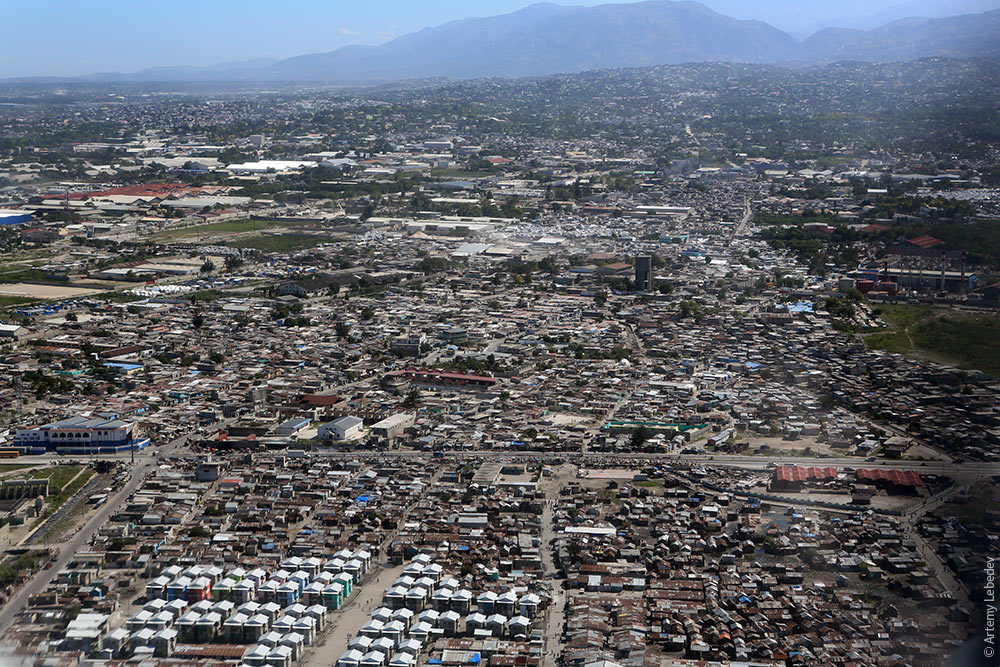 The local coins are as half-decayed and decrepit as Haitian society itself. 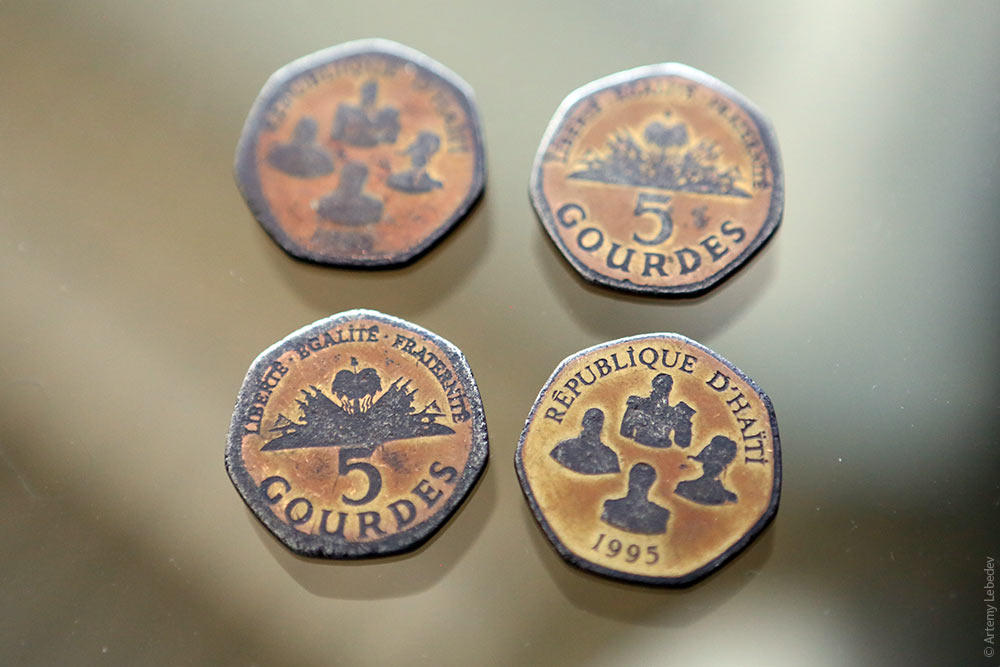 The country’s residents have succeeded in recreating Africa (in the worst sense of the word) in the Americas. 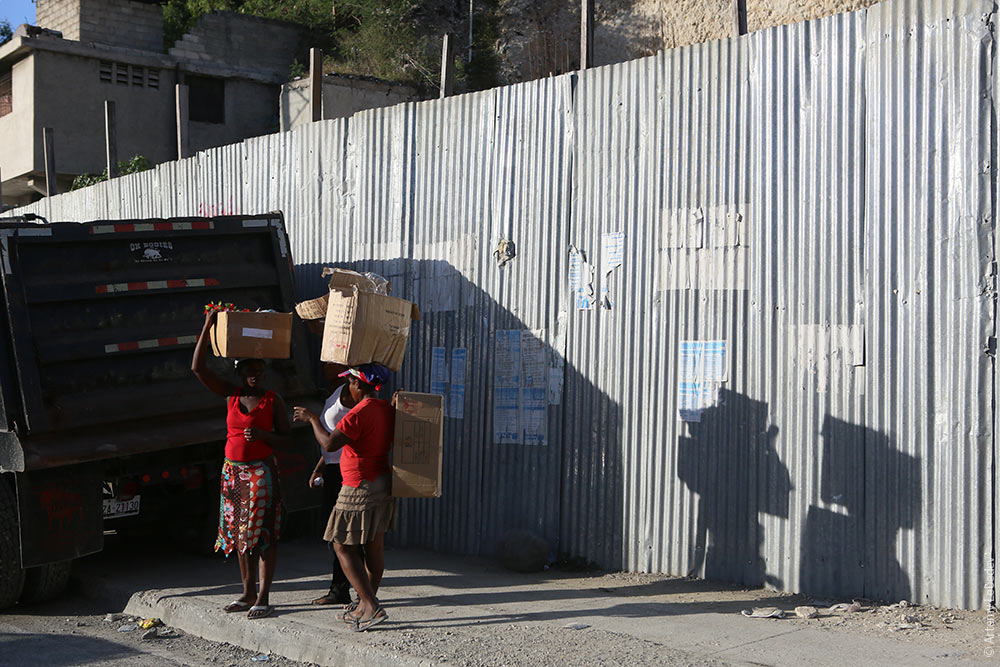 Haiti was the first independent black nation in the world. 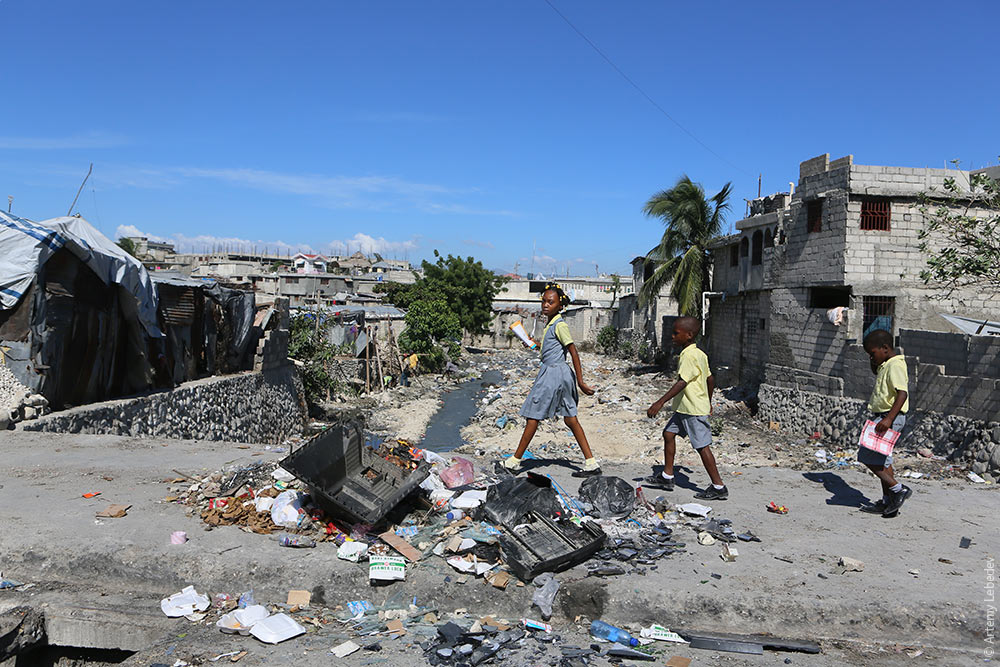 Haiti was the second democracy in the New World after the United States. 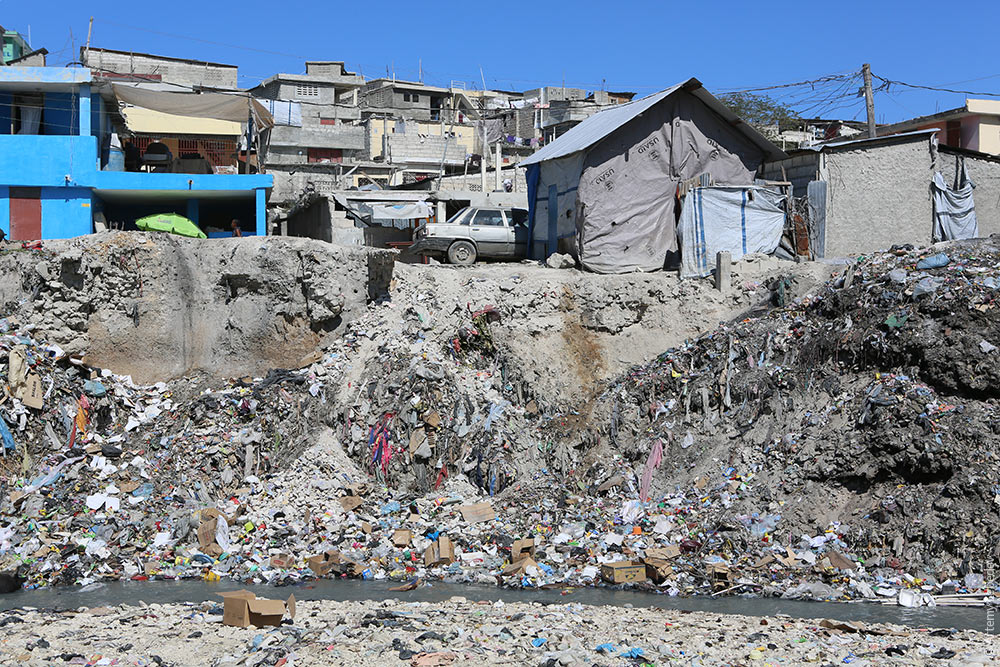 Three years ago the country’s capital, Port-au-Prince, was ravaged by an earthquake that destroyed virtually all the buildings. Billions of dollars allocated towards rebuilding the city were stolen. 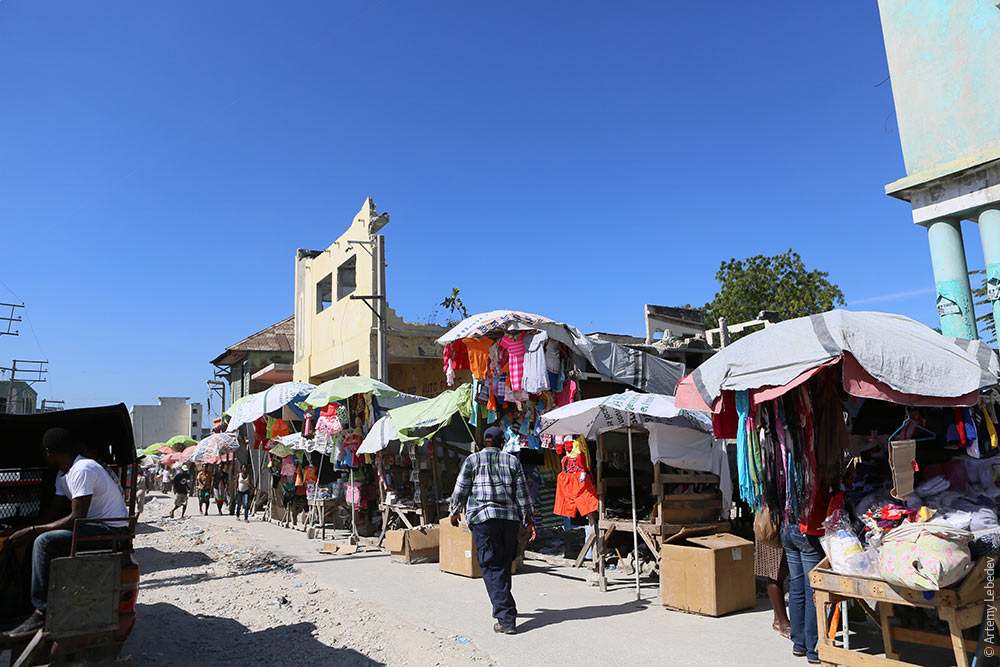 Exactly one new building has been erected in the capital since then—the market. 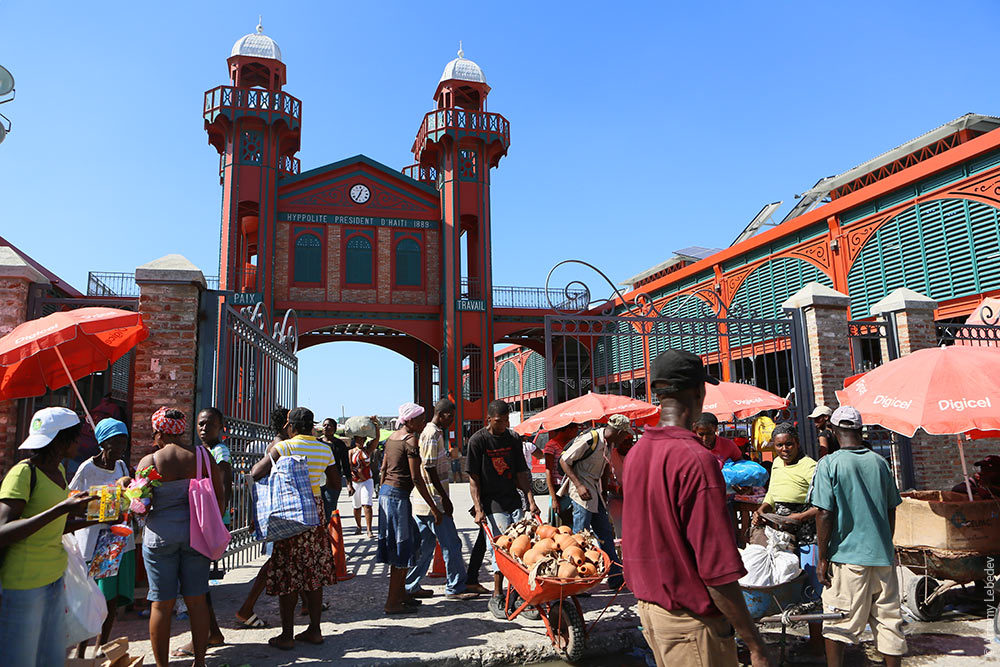 Everything else remains unchanged. 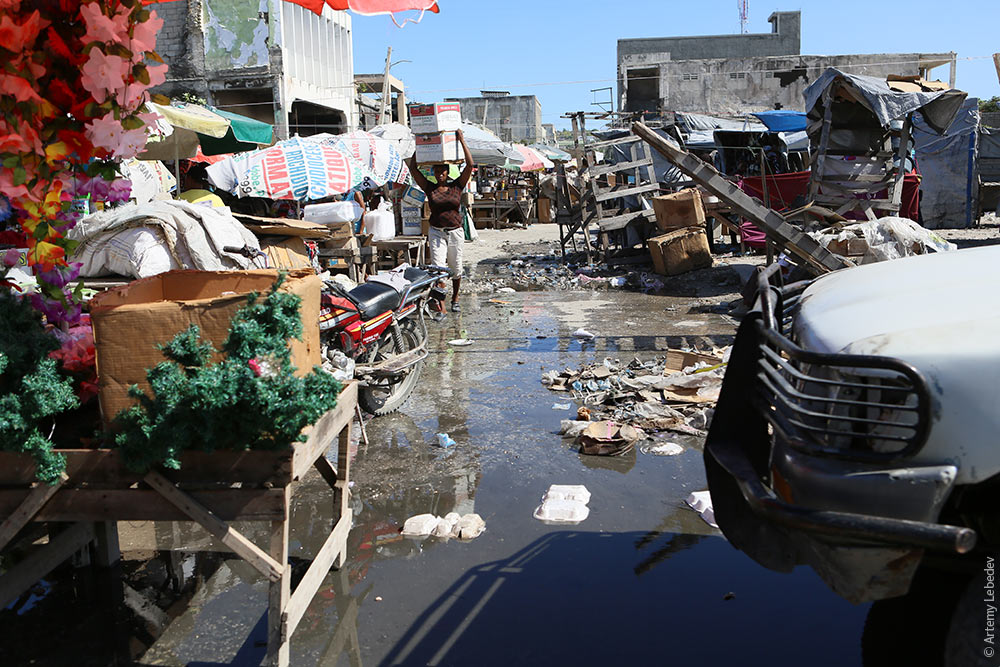 An outdoor banner urges citizens to combat corruption.  A PSA urges citizens to wear helmets on motorcycles. 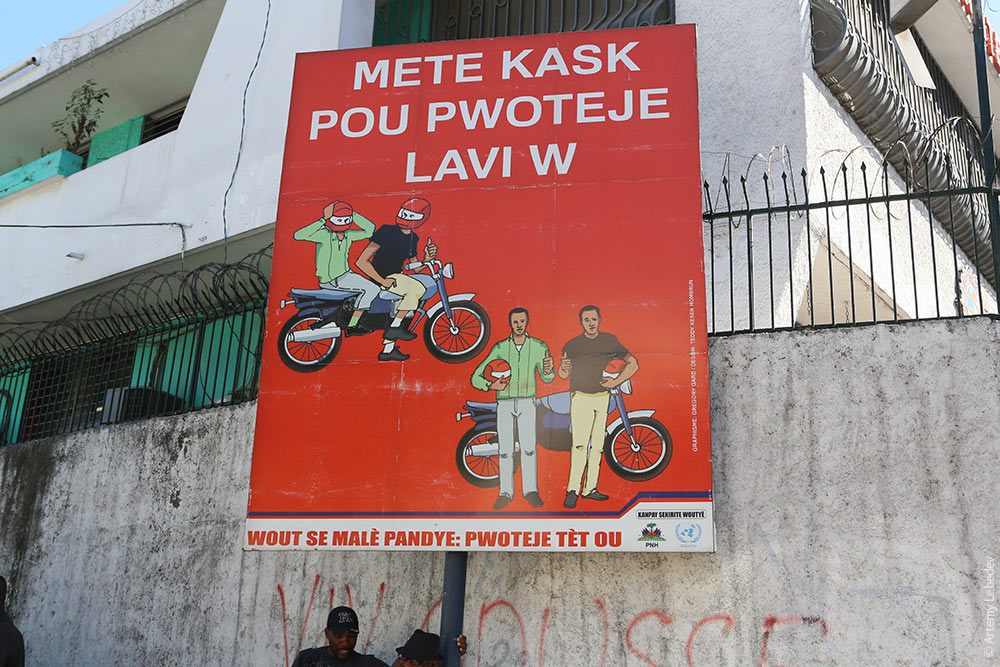 Freedom from slavery. 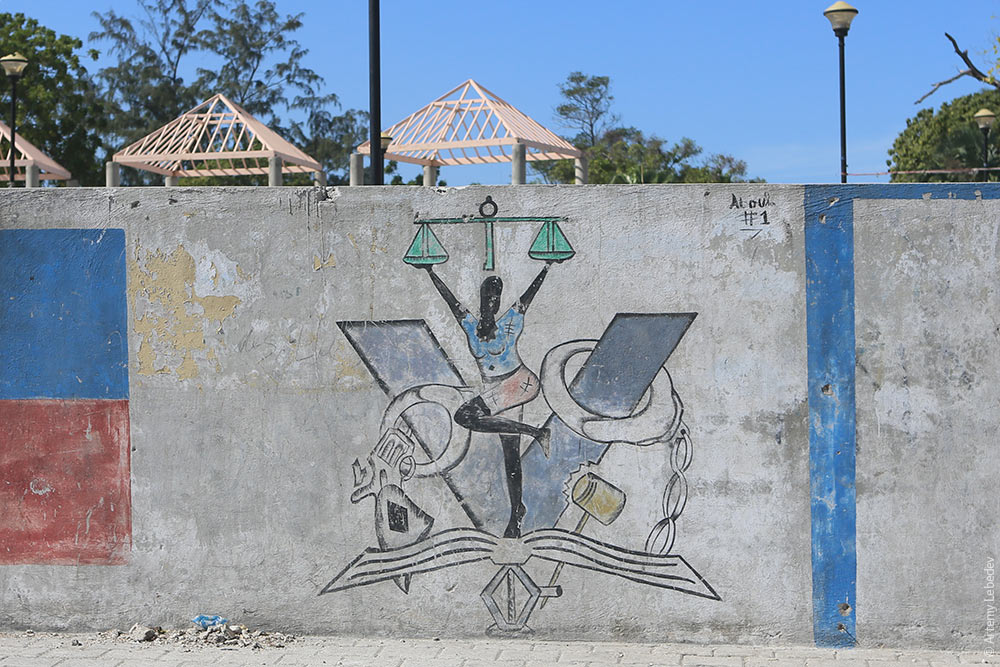 The city. 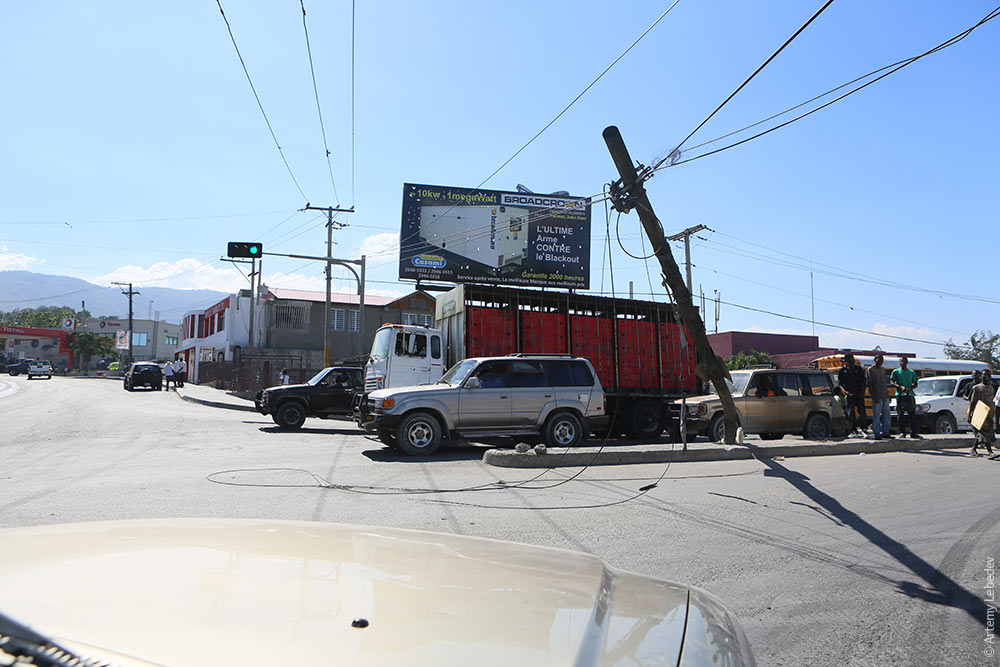 Traffic lights. 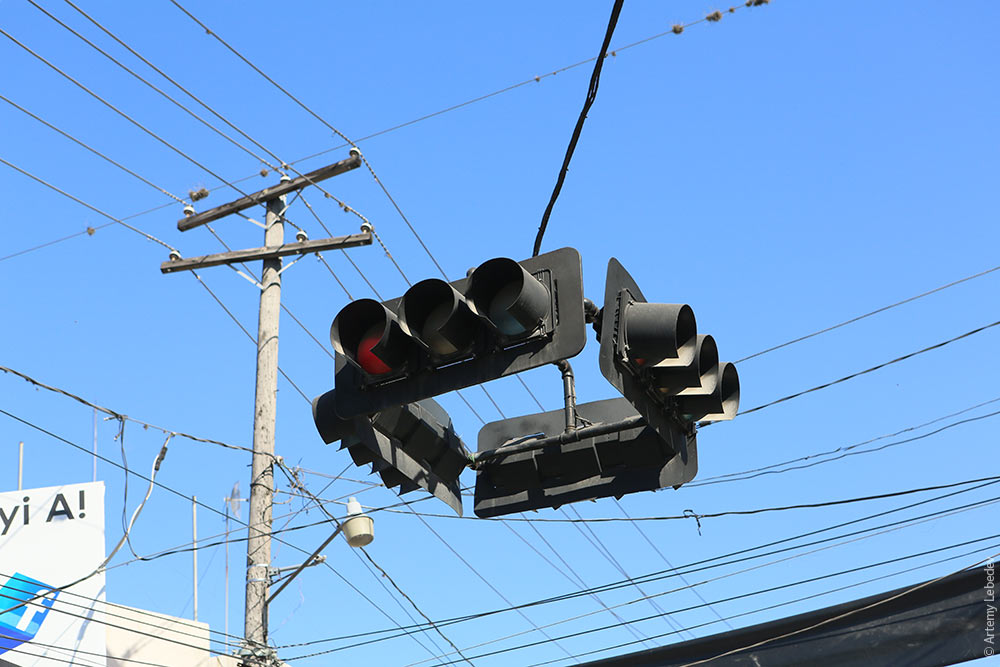 Advertising. 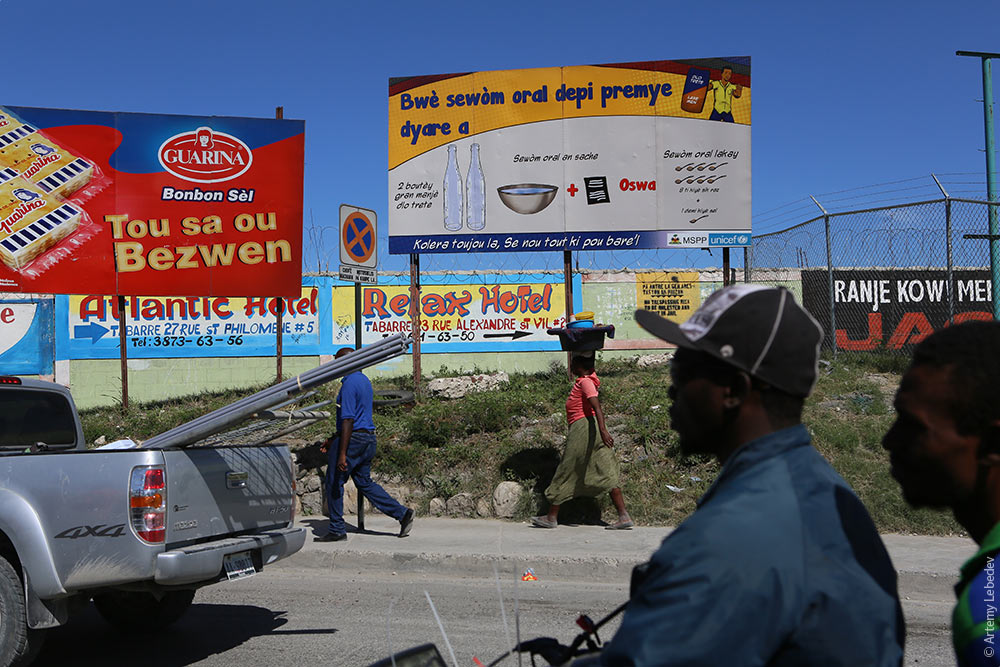 Campaign advertising. 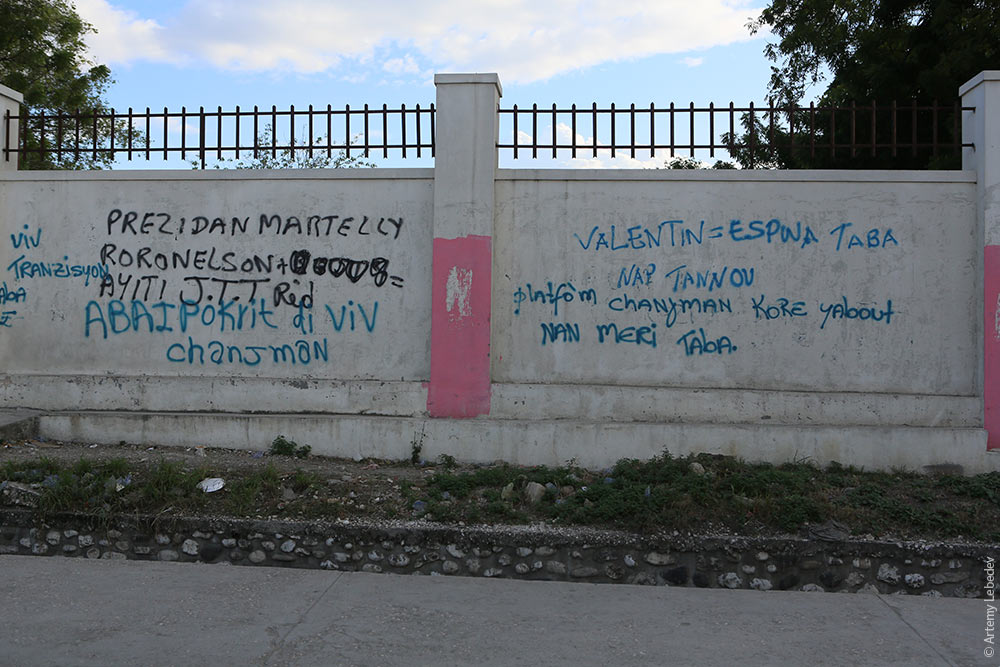 Laundry. 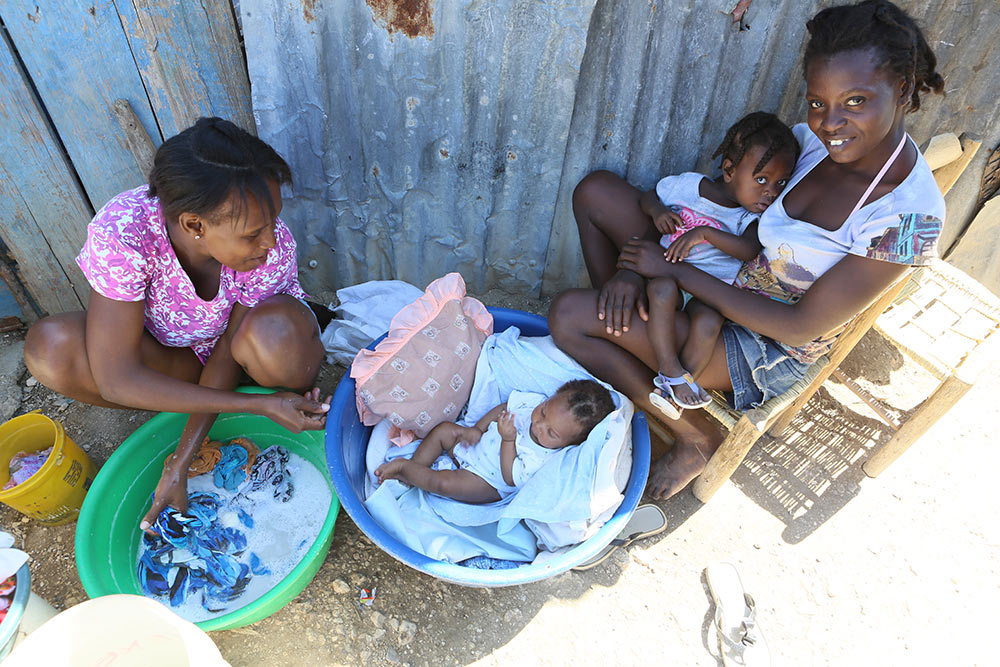 A license plate. 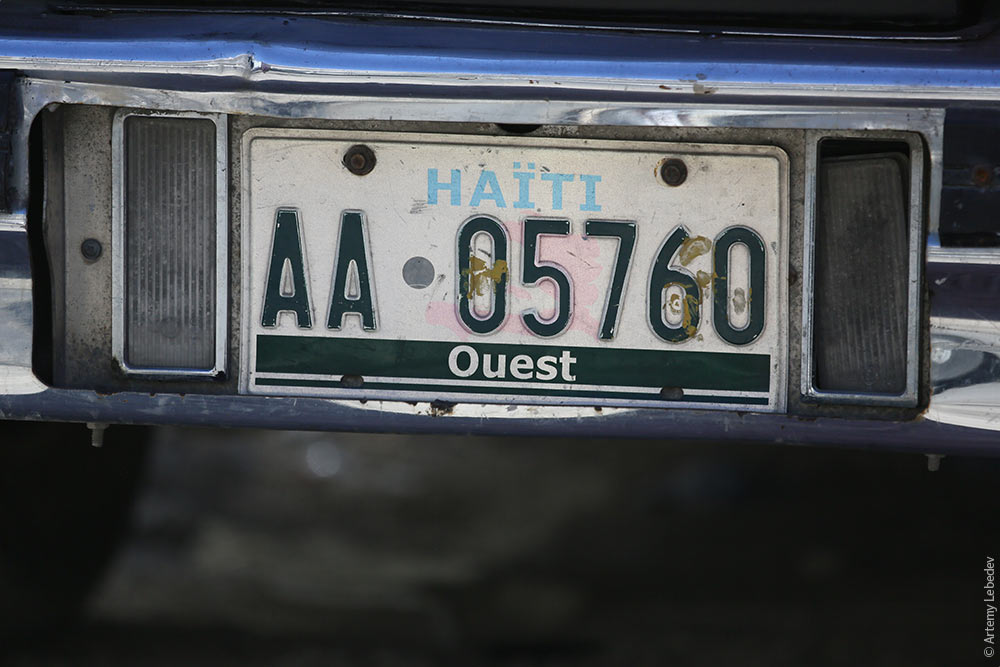 License plates on the front of the car aren’t required, by the way. 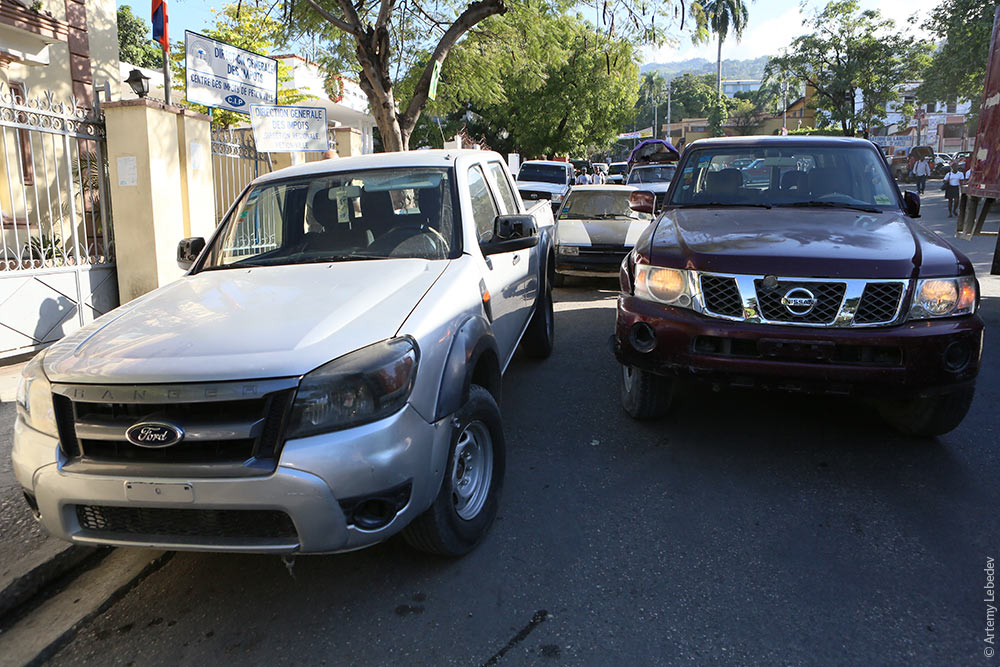 They exist on the front windshield in the form of a yellow sticker. 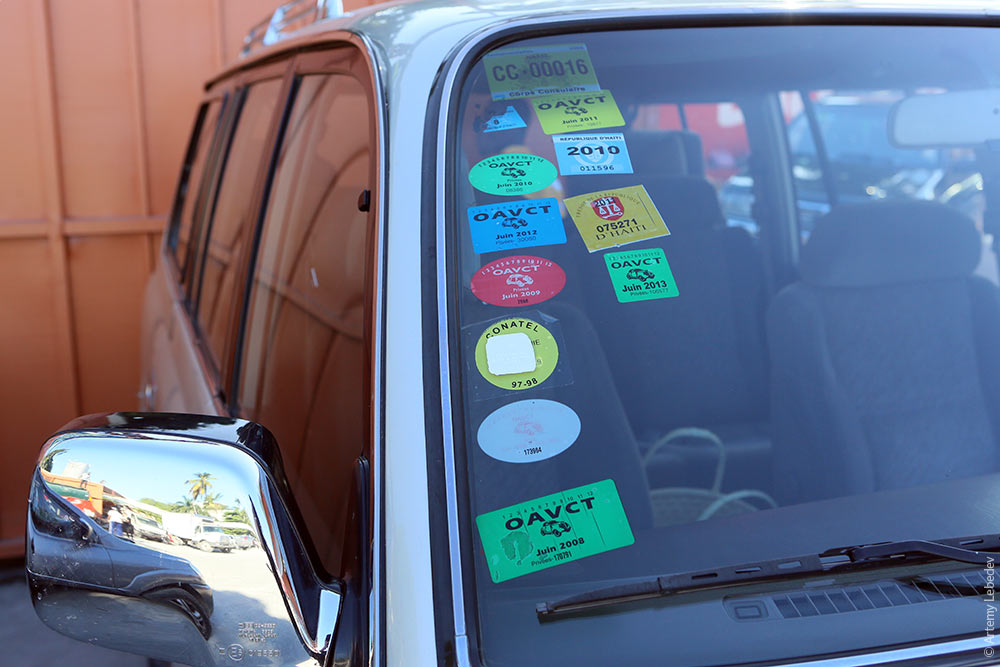 Children. 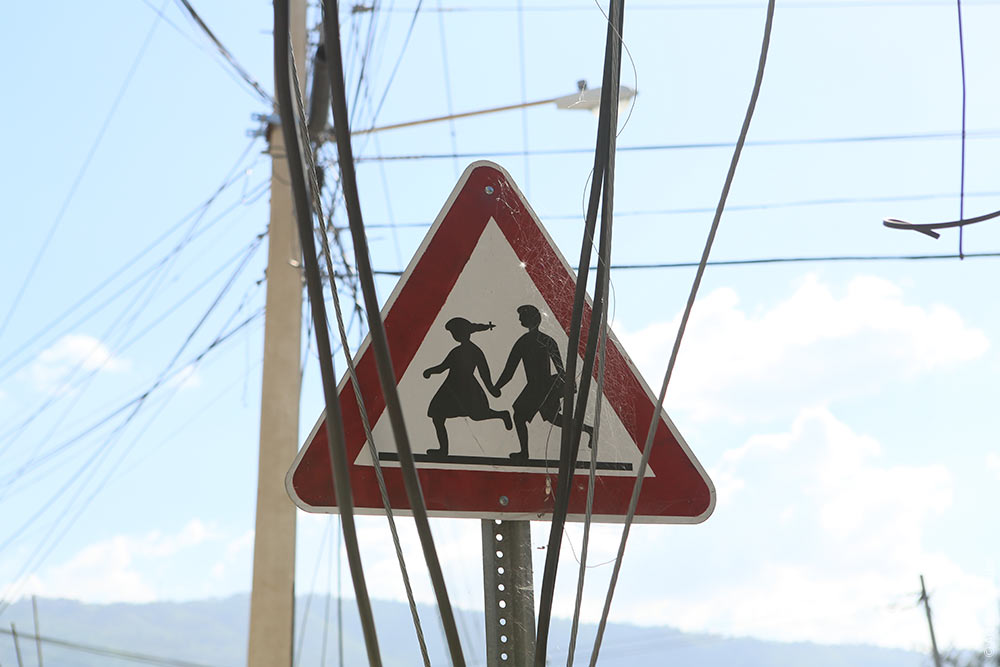 A bus stop. 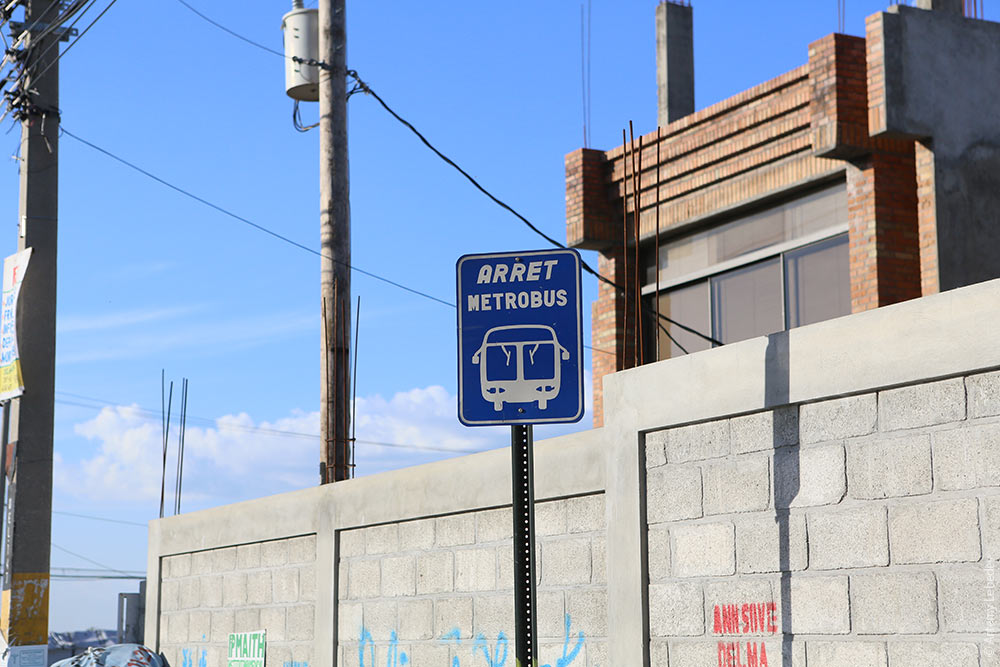 Traffic cones are neon green here.  Just another ordinary day in Haiti. Someone protesting against something downtown. 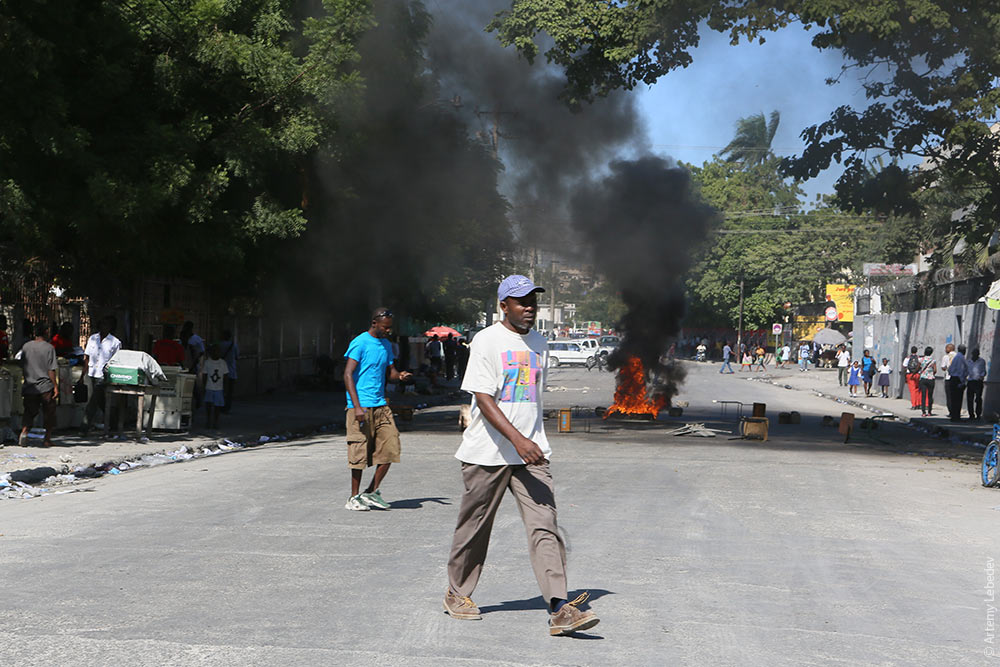 A man lugs sheets of drywall. 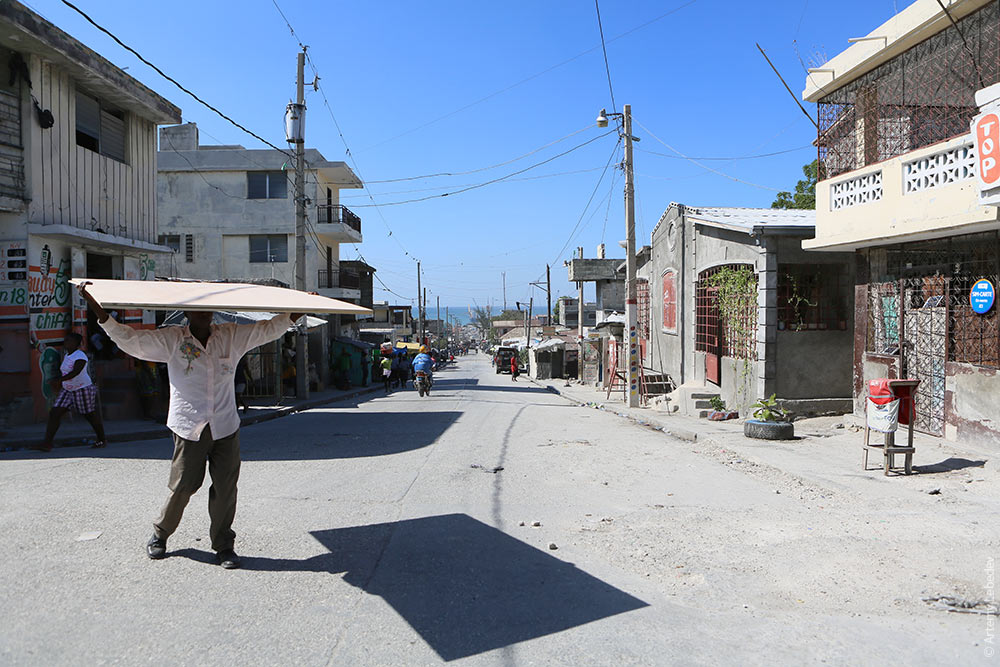 The road to the sea. 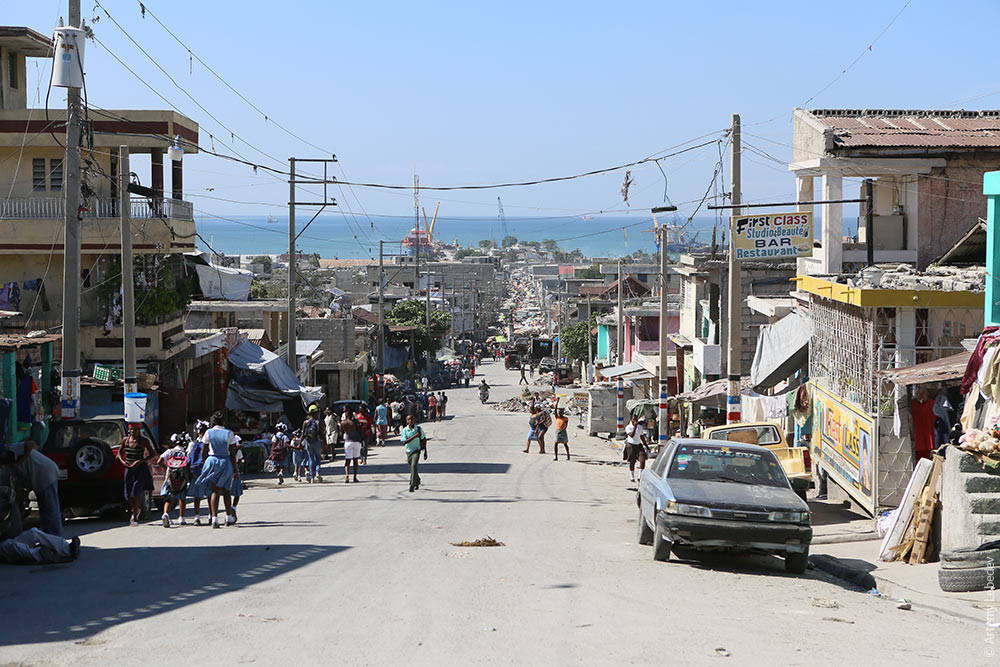 The road to the mountains. 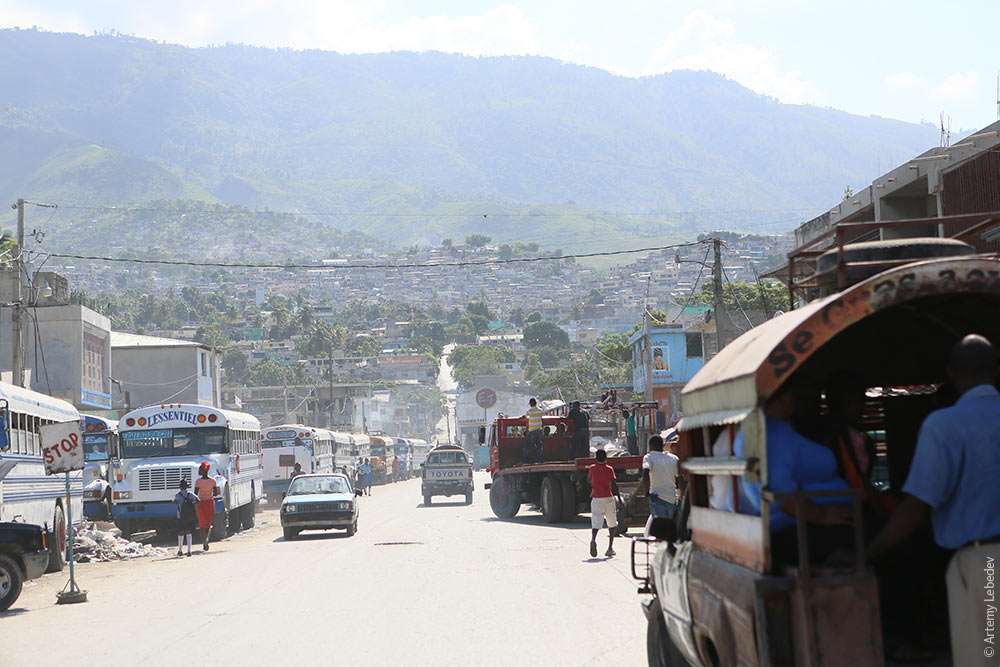 A cathedral. 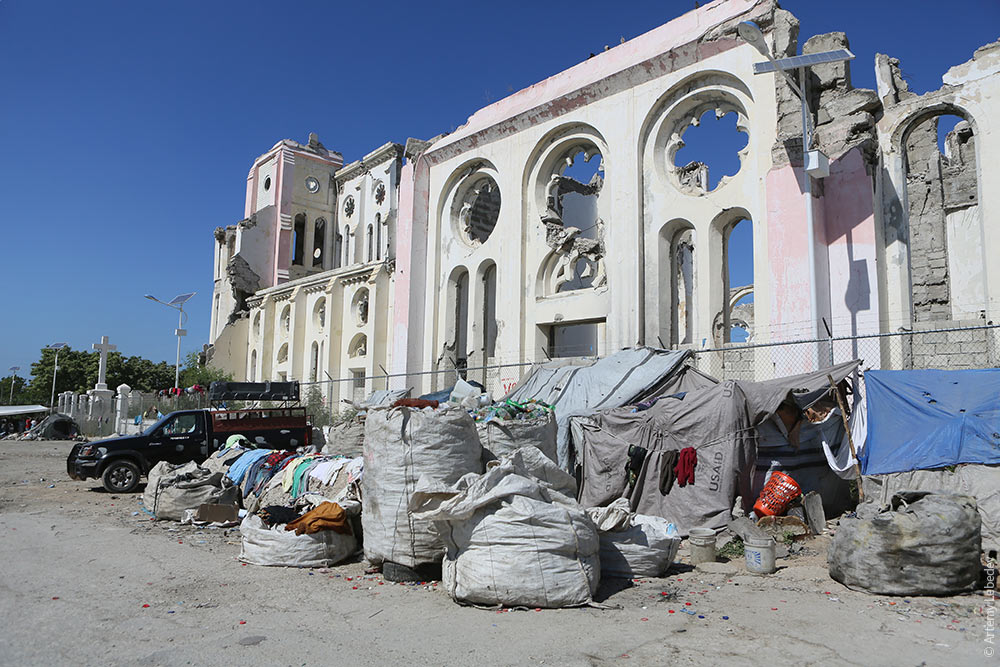 Downtown. 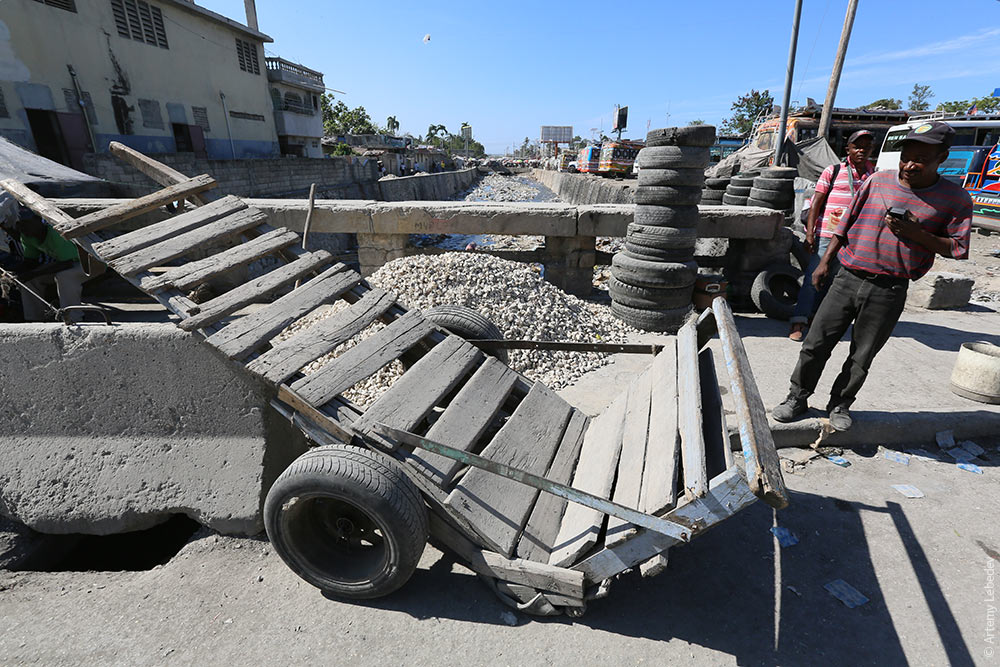 Also downtown.  No firearms on board the school bus, please. 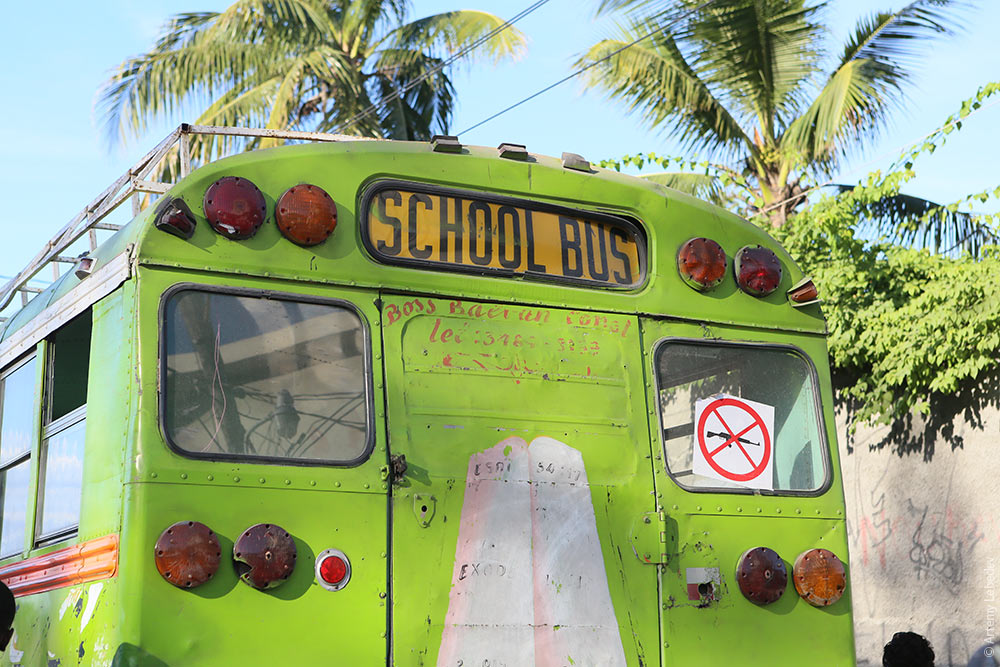 The mudflaps on pickup taxis are always shaped like dollar signs. 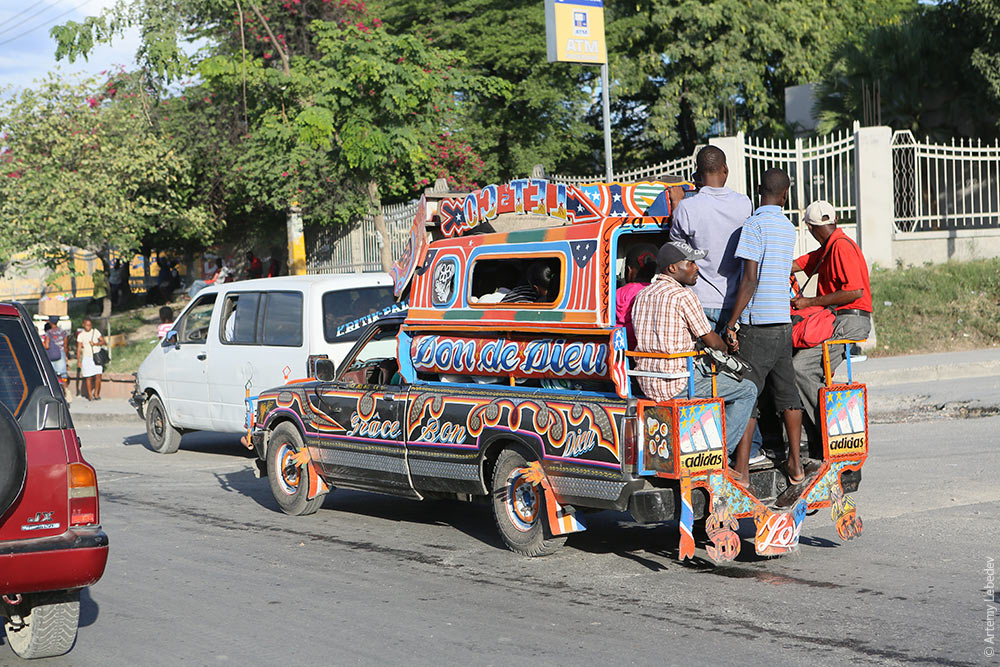 Haiti has an especially well-developed culture of bus decoration (similar to Pakistan or Panama). Someone’s portrait is usually painted on the back. 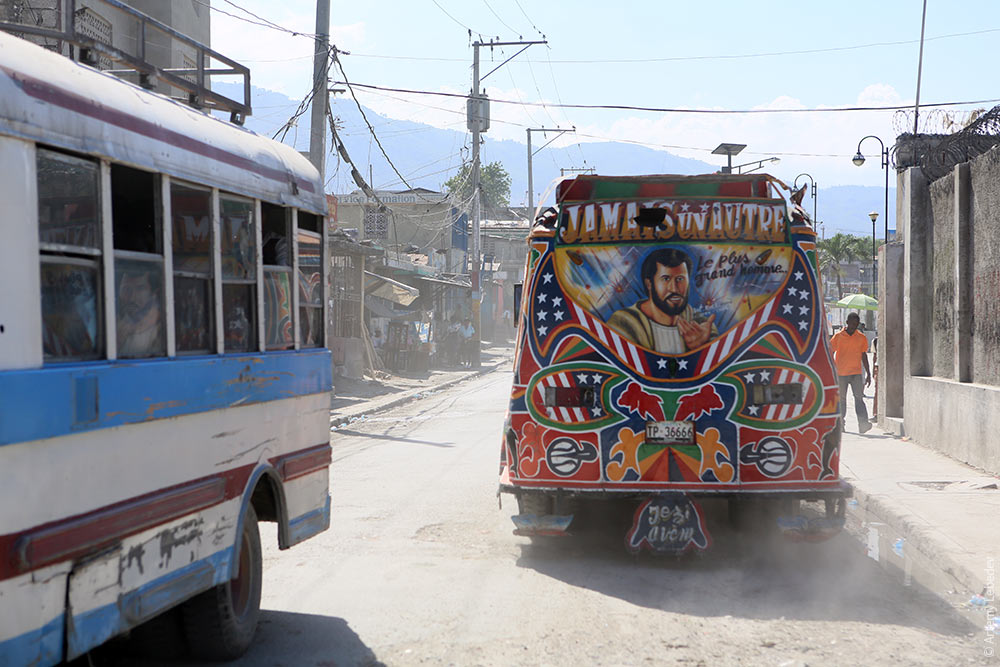 The cargo hold at the top is always decorated with an airplane in profile. 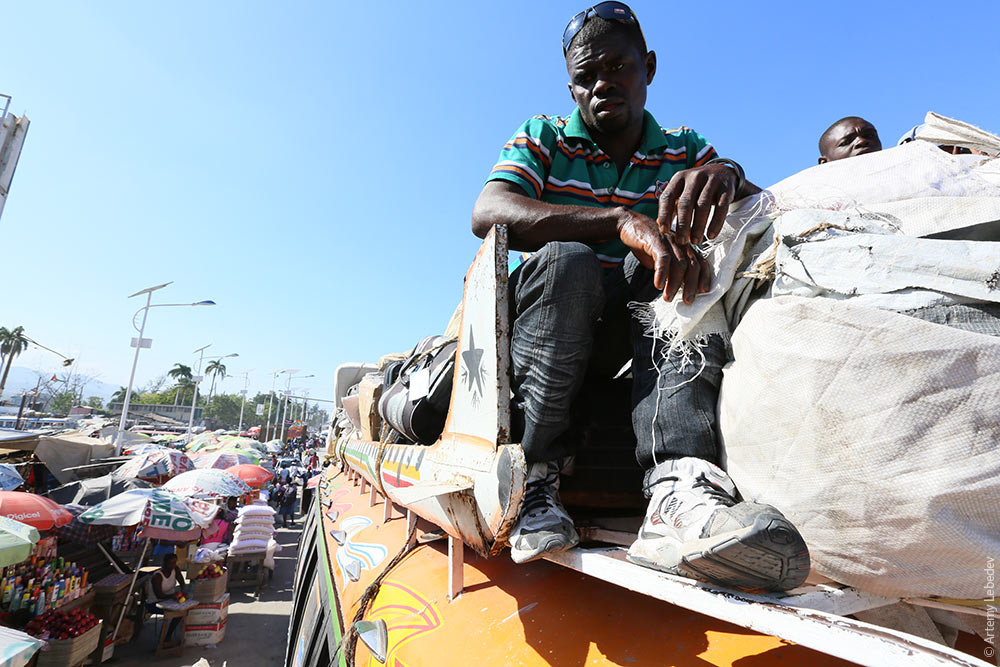 Side windows are usually painted with some kind of repeating motif. 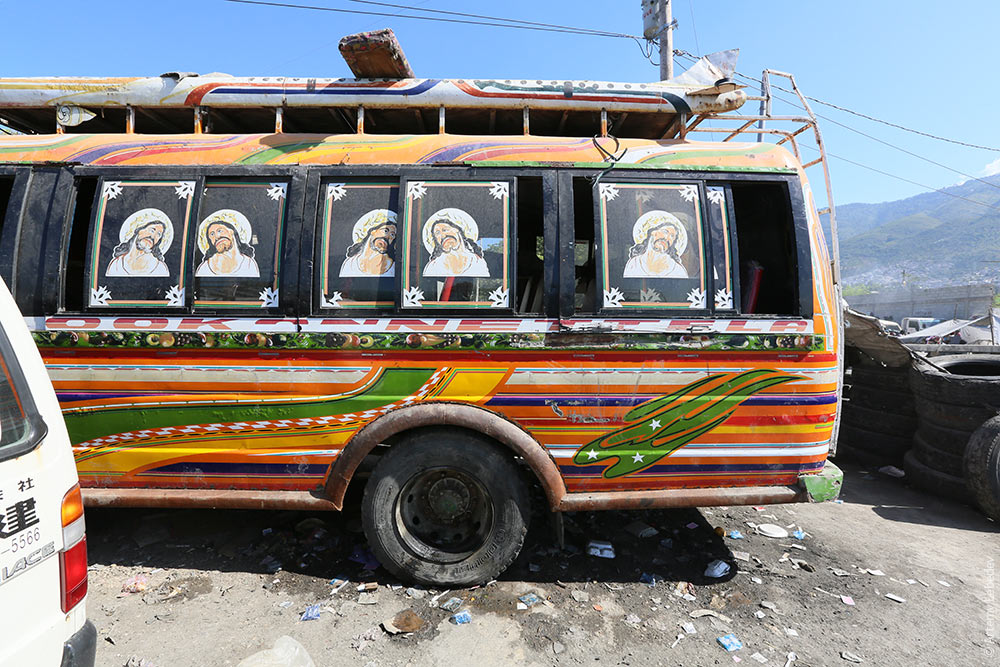 The front is covered with spikes to prevent people from hitching rides. 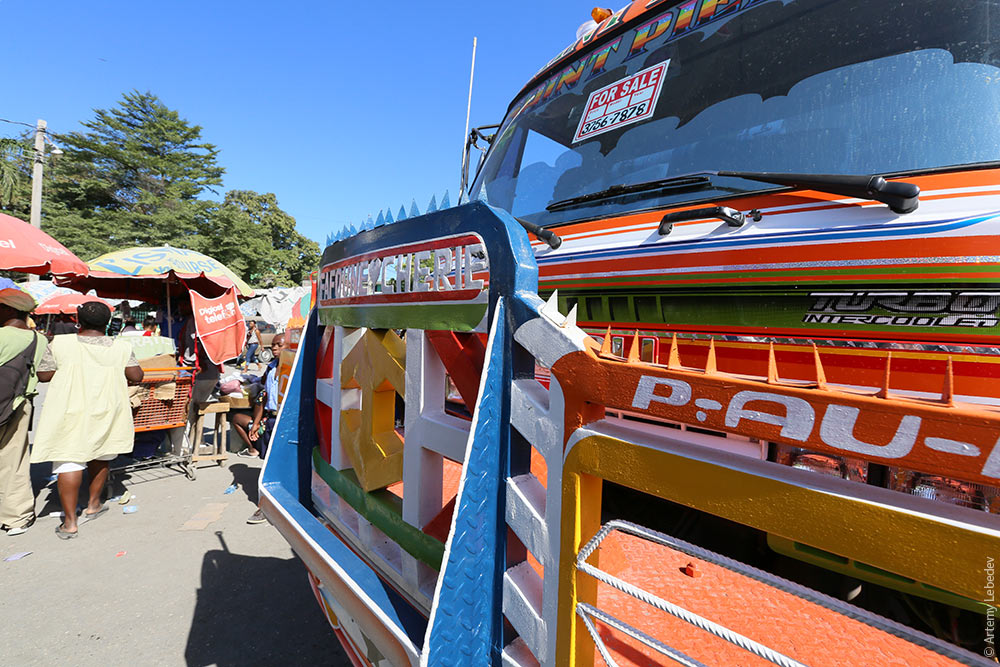 The rear ladders have special metal covers that make it impossible to climb up to the top without the driver’s knowledge. 
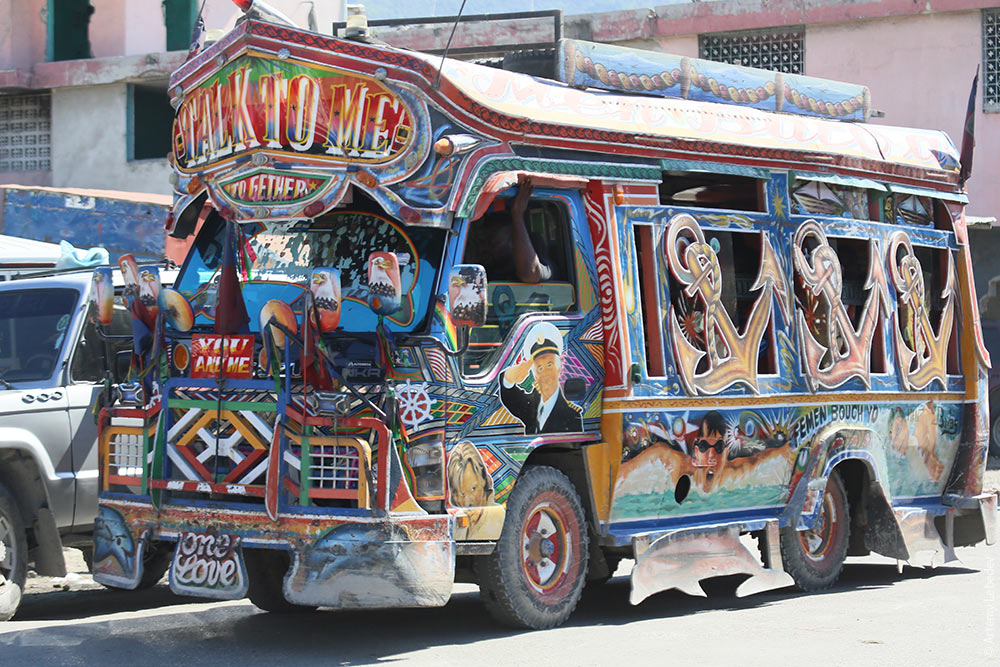 The main entertainment in Haiti is the lottery. 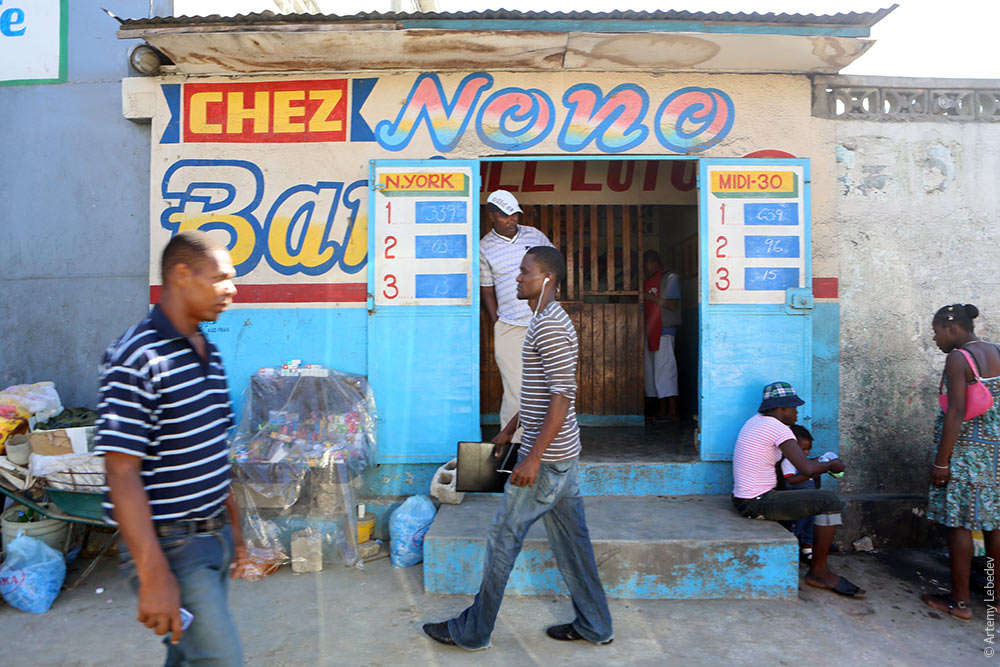 Drawings are held twice a day. They’re called “midi” (noon) and “New York” (held in the evening). 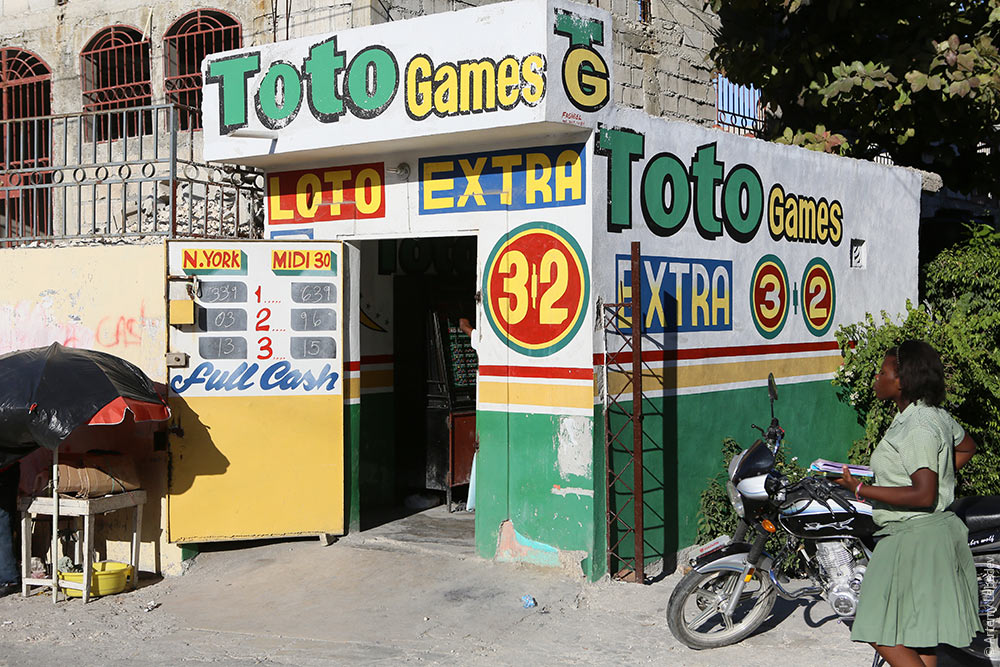 Rumor has it someone won the jackpot. |